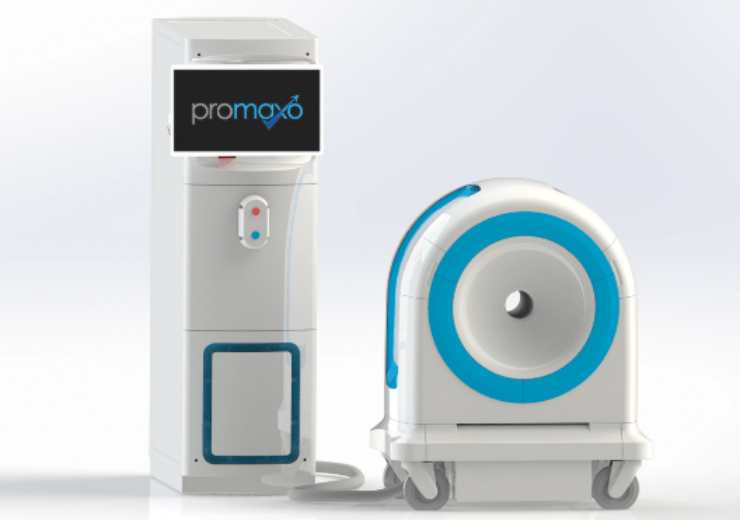Promaxo MRI allows to do surgical localisation of prostatic lesions in an office or outpatient surgical setting

The single-sided MRI is ready for commercial distribution in the US. (Credit: Promaxo)
Promaxo has secured 510(k) clearance from the US Food and Drug Administration (FDA) for its new office-based magnetic resonance imaging (MRI) system.
The 510(k) clearance allows practices and hospitals to accurately guide prostate interventions under the Promaxo scanner.
Using the Promaxo MRI, urologists and interventional/urologic radiologists will be able to perform surgical localisation of prostatic lesions in an office or outpatient surgical setting.
According to the company, multiple validation studies have showed the Promaxo platform technology to be safe, precise and effective.
Promaxo founder and CEO Dr Amit Vohra said: “Every decision made since Promaxo’s inception has been with the patient and provider in mind, to find ways that our technology can both make lives easier and improve treatment outcomes.
“We are looking forward to the next phase in our evolution as we begin to work with urologists and interventional radiologists to install and embrace our MRI product within their practices.”
At present, the Promaxo MR imager is being used at Mississippi Urology to conduct targeted prostate biopsies under an investigational device exemption.
With a limited fringe field, Promaxo’s advanced device has been designed to easily install in an office with no shielding or facility upgrades.
The MRI platform’s configuration is based on an inherent z-gradient and array of permanent magnets arranged to offer a uniform in-plane magnetic field within the field of view.
Promaxo said that its MR imager integrates patented technologies to capture, reconstruct and show resonance images of the prostate and surrounding tissues.
The device is said to leverage pre-programmed sequences and artificial intelligence to boost image quality.
Based in Oakland, California, Promaxo was founded to develop a minimally invasive and patient-centric MRI and robotic platform.
